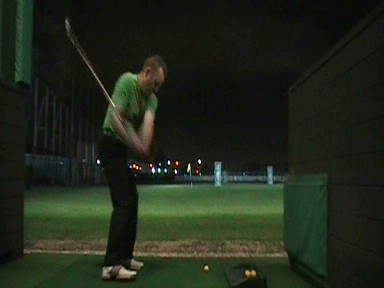Thank you for a warm welcome Lag! Just want to say that your forums and the epic iseek golf thread was a great find for me and helped me alot. Im looking forward to be on board soon!
What’s the golf scene like up there?
The golf scene here is quite active now and is growing measurably every year. For some reason a couple of years ago golf caught on and became incredibly popular and the larger clubs all have waiting lists that are full of people waiting to be accepted. Around the capital we have what I would say quite decent golf courses and alot of smaller 9 hole ones strewn all around the island of various qualities, some wonderful, others plain. One of my favourite things to do during summer vacation is to take highway nr.1 that goes in a circle around the island with good friends sometime in the spring, summer or fall and play interesting courses along the way. It takes a couple of days and you get to play all kinds of different courses embedded in various types of landscapes and just enjoy the good company of fellow hackers, although Im striving to better myself out of that distinction. It just so happens that altough Iceland is situated quite northernly the temperate climate and weather here happens to make it much easier and cheaper to maintain a golf course than in hotter more humid climates. This has lent itself well to the recent boom in the number of golfers and is the reason why so many, although often small and usually 9 holes, courses circle the island. Just for fun here is an aerial guide from a helicopter over all the holes on my clubs 6439 yard course.
[oddur.is/?id=75](http://www.oddur.is/?id=75)
Is your season over?
Yup, all the bigger clubs just closed. While the season may be short there is an effort on some fine courses to extend the season a little and have an amateur fall series competition that would be launched on fair weather days during the autumn so it’s still possible to play here and there. Although the season is short, roughly from mid may to late september were lucky enough (at least the golfers) to have daylight 24 hours during high summer. I play late alot myself and often go alone after midnight and occasionally with a friend. There are very few people playing if any and there are subtle differences in - what can I say, the ambience of playing, at least for me. Although there is light it is a different silkier hue than during the day… ,and, in good weather, it’s a serene if not tranquil experience. For me, there’s a little more to this crazy game than most I think. To a degree it’s also a form of meditation for me, although my friends tease me alot when I say stuff like that hehe. But alas I digress, just thought Id share a little…
Regarding equipment and lie angles
Well, I thought as much, there couldn’t be any simple way of adjusting lie angles on modern drivers and one will probably have to go to some length to make the lie angles flatter on the newer equipment while having to gamble with ruining the metal in one way or another . One guy I talked with this evening told me that callaway had some sort of system, I don’t know exactly, that had something to do with the hozel that might have something to do with adjusting lie angles…again he wasn’t entirely sure himself, but even then he thought you could only go from 58 degrees to 56 using some mechanical system he couldn’t completely describe.
On the other hand regarding " knowing better" as you say, I admit that I find your views and musing on the game very agreeable, and, altough I’ll save it for now, could write and voice a myriad of thoughts and opinions on the subject myself, although I will voice that what some people criticise as being purist, I would rather call being balanced. Rest assured that I will be adding a persimmon to my arsenal soon. On the other hand I have always practiced with blades so that’s already solved, although as time progresses they may need a little tinkering with the lie angle:)






